Botulinum toxin type A injections are most often used by estheticians in the upper third of the face, in particular to smooth wrinkles in the forehead, between the eyebrows and in the corners of the eyes. However, practitioners are constantly expanding the possibilities of using neurotoxin. So, in the lower third of the face, preparations are also used to work with wrinkles in the perioral region, platysma strands, and the formation of attractive facial contours. The article estet-portal.com describes the technique for correcting the angles and contours of the lower jaw using injections of botulinum toxin type A.
- Age-related changes in the lower third of the face and neck
- Botulinum toxin injections for rejuvenation of the neck and lower jaw area
- Technique for correcting the angle and contours of the lower jaw with botulinum toxin
Age-related changes in the lower third of the face and neck
Age-related changes in the neck and lower jaw, as in other parts of the face, are associated with loss of elasticity, volume reduction, soft tissue ptosis and bone resorption. As a result, the contours of the face are deformed, and the line of the lower jaw becomes more blurred.
In addition, the subcutaneous muscle bundles of the neck become more visible due to a decrease in skin elasticity and separation of muscle fibers.
Read also: Aging pattern and neck rejuvenation with botulinum toxin type A injections
Platisma – a wide flat muscle covering the anterior and lateral parts of the neck. It arises from the superficial fascia above the upper chest and rises superomedially from the neck, attaching at three points:
- medially – to the chin;
- centrally – to the periosteum of the mandibular branch;
- laterally – to the orbicular muscle of the mouth, the muscle that lowers the angle of the mouth, and the muscles of laughter.
During the contraction of the upper and lower parts of the platysma, the skin is pulled up to the central part of the muscle, horizontal lines are formed on the neck.
Botulinum toxin injections for rejuvenation of the neck and lower jaw area
Now botulinum toxin is widely used for neck rejuvenation. Brandt and Bellman are the first to clinically demonstrate that injections of botulinum toxin type A into the platysma smooth out the horizontal wrinkles of the
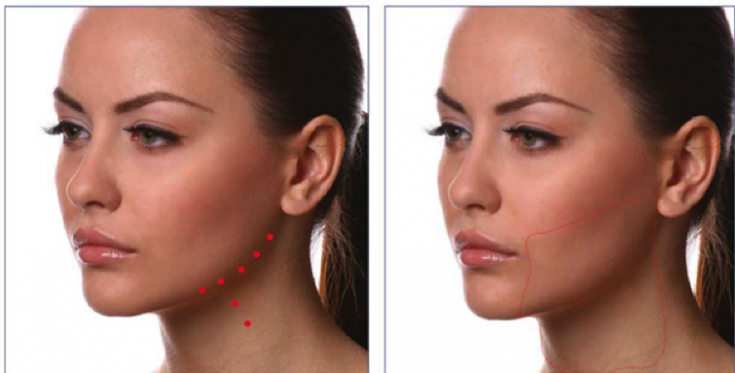
Levy; right – the red line marks the area for microbotox treatment The activity of the platysmal complex, which affects the lower third of the face, is the factor that leads to the loss of definition of the mandibular line. Botulinum toxin injections relieve tension by reducing the depressant effect of the muscle, providing non-invasive facial rejuvenation.
Follow us on
Instagram!
The Nefertiti techniquefor neck rejuvenation and lower jaw contouring described by Levy (Fig. 1) provides:
skin lifting of the lower jaw line;- raising the corners of the mouth;
- Improve the contours of the lower jaw.
- However, this technique is limited to injecting the toxin into the last bundle of the subcutaneous muscle of the neck.
et al suggested that botulinum toxin type A be injected intradermally into the platysma, 1-2 units for each point located along the horizontal lines. Correction of one side of the neck requires 15-20 units of toxin. For safety and to reduce the risk of side effects, the authors of the technique recommend incomplete correction.
You may also be interested in:Botulinum toxin – beautician's universal tool: insertion techniques The
Microbotoxtechnique can also be used in the lower third of the face to lift the lower jaw, improve the cervico-chin contour and block platysma activity (Fig. 2). Technique for correcting the angle and contours of the lower jaw with botulinum toxin
Thirty patients with fuzzy mandibular angles were studied in a study by Drs. Bruna Souza Felix Bravo, Julien Totti de Bastos, Camila Roos Mariano de Rocha, Berta Alcala, Stephanie Bianco, Fernando Luis Lopes dos Santos and Leonardo Goncalves Bravo.
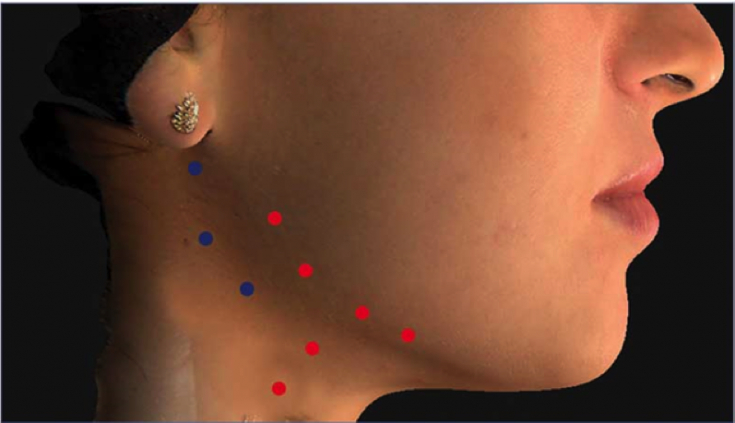
The mandibular angle was taken as the basis for marking the injection points for botulinum toxin.
Schemeinjections is shown in Fig. 3. The first point is located at a distance of 2 cm from the edge of the lower jaw in the direction of its angle; the second and third points are located 1 cm above and below the first.
Dilute: 100 units BoNTA per 1 ml of saline 0.9%. Syringe with markings for 30 units, needle – 10 gauge, 8 mm. Slight dilution provides a high safety profile and optimal effect on the delicate subcutaneous muscle of the neck. 2-3 units of botulinum toxin were injected intramuscularly at each described point.
ResultsAccording to the results of a retrospective examination of 30 patients, approximately
15 daysafter injections of botulinum toxin, it was observed:
marked increase in the angle and contours of the lower jaw;- reduction of ptosis in the target area.
- On average, the result lasted for 5-6 months. There were no side effects associated with this technique.
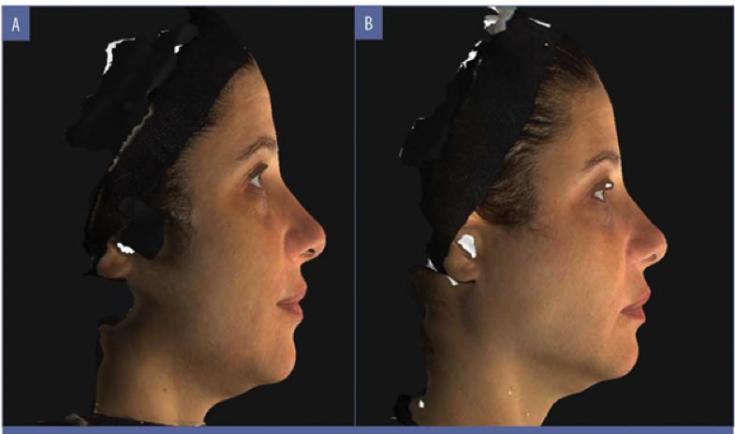
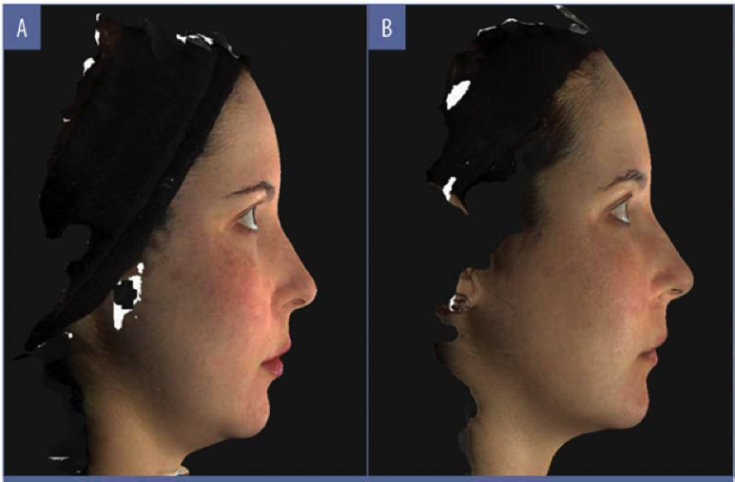
ecchymosis;
local discomfort;- headaches;
- dysphagia;
- weakness in the neck;
- speech disorders;
- asymmetries;
- dry mouth.
- For safety reasons, the authors recommend that anomalous location of the salivary glands be ruled out before botulinum toxin injection into the mandible area.
- In order to avoid the migration of the toxin into the surrounding tissues, it is necessary to inject the drug superficially and in the correct dosage.
The presented technique is not effective for patients with severe ptosis and excess adipose tissue in the lower jaw.
Ideal Candidates– patients with mild to moderate sagging (0–2 on the
Carrutherset al scale).
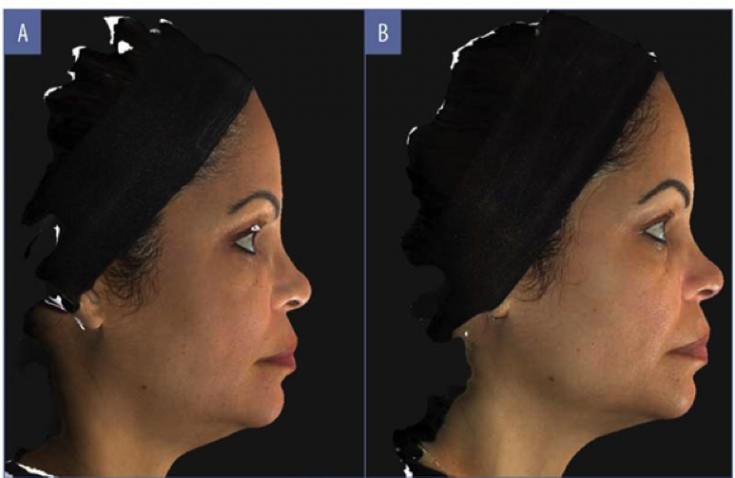
To improve the clarity of the contours of the lower jaw, the authors also injected botulinum toxin into the lower edge of the body of the lower jaw using the
Levytechnique. This approach involves horizontal injection of the drug along the mandible, as well as in the upper part of the posterior platysma bundle, in the amount of 2-3 units per point (total 15-20 units on each side of the face). Result – visible weakening of muscle traction and restoration of the contour of the lower jaw. This procedure is suitable for patients whose bands become more pronounced as the platysma contracts. In combination with
botulinum toxin injections into the masticatory muscles
(if indicated), the approach described by the authors allows narrowing the lower third of the face and obtaining a pronounced aesthetic result. Adapted from J Clin Aesthet Dermatol
. More interesting videos on our YouTube







Add a comment